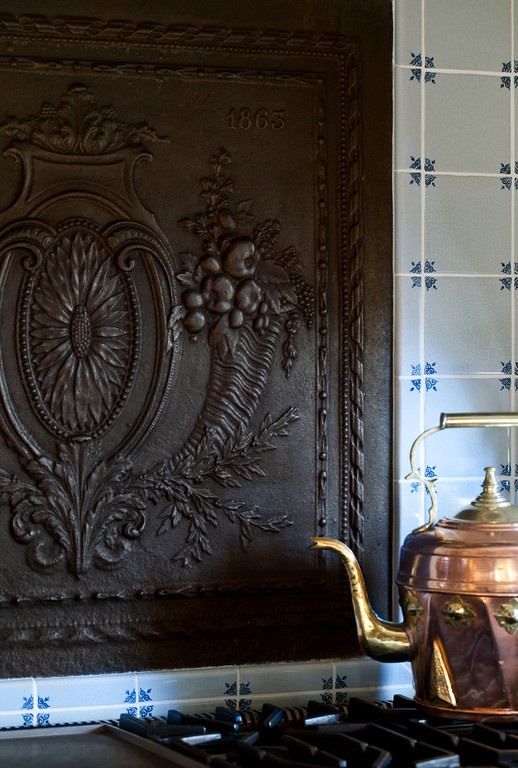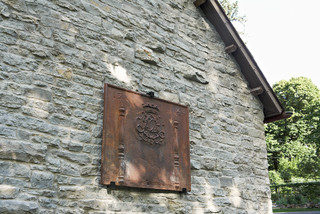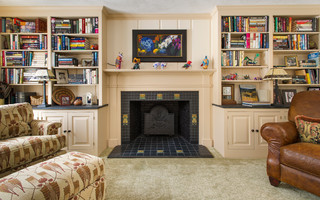Toasty and Warm with a Fireback
Oh, the weather outside is frightful, but the fire is so delightful!
It certainly can be toasty and warn if a decorative fireback is part of your fireplace decor.
The primary function of a fireback is to protect the wall at the back of the fireplace. It was often made of cast iron. The oldest firebacks date from the 15th century AD, the early days of iron casting.
Wood fires have low efficiency. For those that prefer the atmosphere of an open, wood-burning, fire, the fireback helps to minimize this problem. The thicker the fireback, the longer (and softer) this radiative effect. A fireback thus may increase the efficiency of the fire and radiates heat back into a room. A fireback can increase the heat input of a fireplace to the point where it is possible to heat an entire living room or even a larger open living area or floor of a small home
This old technology is still quite functional and lovely in today's homes. Nowadays, old firebacks are often used as backsplashes in traditional kitchens.
 |
| Antique French Fireback as Stove Backsplash |
But, don't limit yourself to only using firebacks as a backsplash. They also make wonderful art above a fireplace, or in the garden on a brick wall.
We plan to purchase and use one as it is intended...in our fireplace. A fireback should be at least wide enough to shield the hearth wall directly behind the fire.
For such an application, it can be mounted directly to the back and sides, leaned against the back of the fireplace or you can simply use specialized feet (Saf-T-Boot support system).
 |
| Fireback with Saf-T Boots |
RELATED
RESOURCES
|






I thought Finland found that fireback caused cancer.
ReplyDeleteI miss you and think you're still very funny.
Delete:-)
DeleteNeat article. Where can I buy one?
ReplyDeletePlease see the resources at the bottom of the page.
Delete